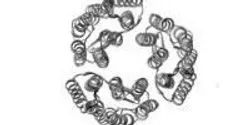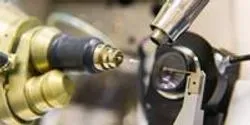Proteins

A new type of biomolecular tweezers could help researchers study how mechanical forces affect the biochemical activity of cells and proteins. The devices – too small to see without a microscope – use opposing magnetic and electrophoretic forces to precisely stretch the cells and molecules, holding them in position so that the activity of receptors and other biochemical activity can be studied.

After a decade of debate, Brandeis University scientists have a clear picture of a controversial protein.

Newest method for determining a protein's shape based on XFEL technology significantly broadens number and type of proteins that researchers can study.

Researchers from Warwick Medical School have discovered the key role of a protein in shutting down endocytosis during mitosis, answering a question that has evaded scientists for half a century.

New recommendations for using X-rays promise to speed investigations aimed at understanding the structure and function of biologically important proteins – information critical to the development of new drugs. Scientists from two U.S. Department of Energy national laboratories, Argonne and Brookhaven, and the University of Washington, Seattle, evaluated options to remedy problems affecting data collection in their new study.














